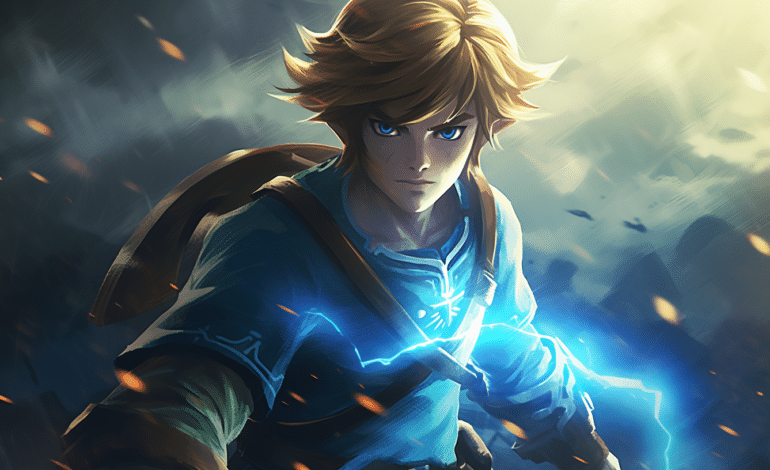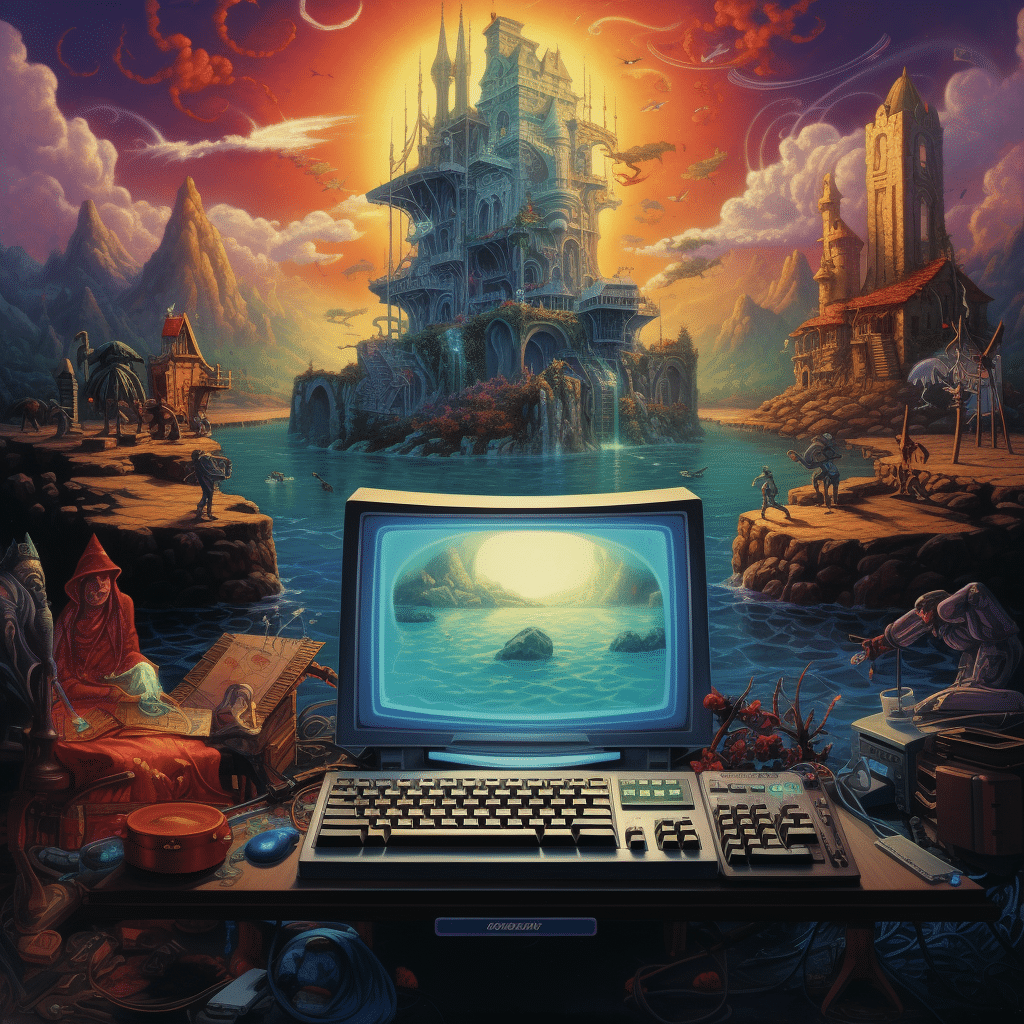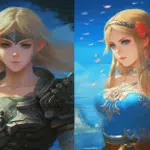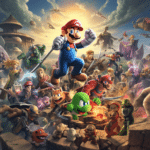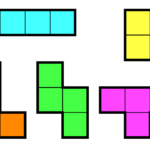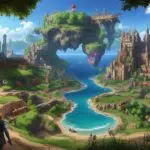
Which one goes on top?
In the world of open-world gaming, two titles have captured the attention and imagination of players worldwide: “Genshin Impact” by miHoYo and “The Legend of Zelda: Breath of the Wild” by Nintendo. From the moment they were revealed, comparisons between the two have been rampant, mainly due to their similar visual aesthetics and mechanics. Despite these similarities, each game offers a distinct experience shaped by their design philosophies, gameplay features, and narrative focus. This article aims to delve into an in-depth comparison of the two, drawing insights from multiple perspectives to give you a comprehensive understanding of what sets these two games apart.

Visuals and Mechanics: A Shared Aesthetic Explored
A Familiar Look and Feel: Worlds That Breathe
One of the initial impressions that “Genshin Impact” and “The Legend of Zelda: Breath of the Wild” leave on players is their strikingly similar visual language. The cell-shaded graphics create an aesthetic that is at once whimsical and breathtaking, offering up a dreamlike vision of a world waiting to be explored. Both games make excellent use of color palettes that bring out the lush greens of their rolling hills and the azure blues of their sprawling skies.
In “Genshin Impact,” the attention to detail extends from the architectural diversity between Mondstadt’s European medieval style and Liyue’s East Asian influence to the minutiae of NPC interactions as seen in these photos on Pinterest. You could be traversing the countryside one moment and find yourself in a bustling market square the next, listening to the chatter of vendors and the laughter of children.
Similarly, “Breath of the Wild” presents a Hyrule that is a vast playground filled with natural beauty and hidden challenges. The attention to detail is exceptional, whether you’re noticing the way light falls through tree branches or the eerie calm that precedes a torrential rainstorm. It’s a living world, filled with dynamic weather systems and a day-night cycle that impacts both exploration and gameplay.
Similar But Different: More Than Just Aesthetics
While both games may share common ground in their visual design and some gameplay mechanics, they deviate significantly when it comes to their core gameplay loop and objectives. “Genshin Impact” makes use of a party system, allowing you to control multiple characters, each with their unique abilities and elemental affiliations. These mechanics add depth and strategy to combat and puzzle-solving, inviting players to find creative combinations for tackling challenges.
The game also brings in gacha elements that add another layer to character acquisition and customization. These elements are enhanced by real-time multiplayer options, allowing friends to join your world for cooperative quests or challenges. It’s a world designed for community and shared experiences, continuously rejuvenated through frequent updates.
On the other hand, “Breath of the Wild” champions a solitary journey through its vast expanse. There is a meditative quality to the game, heightened by its ambient soundtrack and the minimalist design of its world. As Link, players find themselves wandering through ancient ruins and desolate landscapes that serve as a constant reminder of a civilization lost to calamity. Here, there are no rotating banners of new characters, no timed events, just you and the open world.
Even the game’s puzzle mechanics, often integrated into the landscape itself in the form of Shrines, are exercises in solitude and ingenuity. The game doesn’t urge you towards the next big event or push you to interact with other players; instead, it lays out a world full of questions and gives you the tools to find the answers at your own pace.
A Tale of Two Perspectives
The visual and mechanical similarities between “Genshin Impact” and “Breath of the Wild” might serve as a point of entry for many players, but they also set the stage for divergent experiences that cater to different tastes. Whether it’s the bustling, shared world of Teyvat or the contemplative, solitary expanses of Hyrule, both games offer something valuable — they’re visually similar but experientially distinct, and therein lies their individual magic.
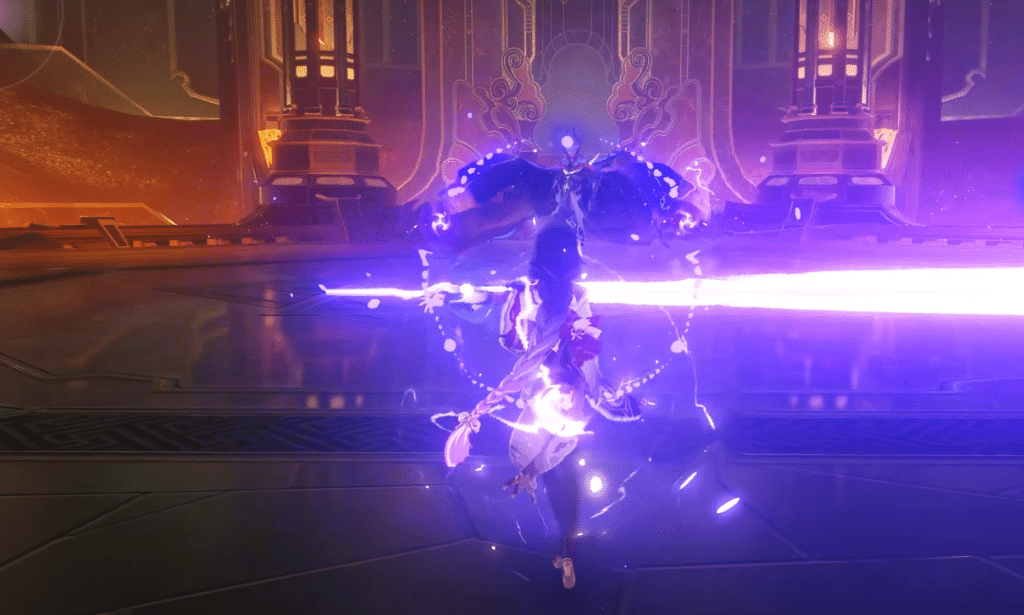
Game Experience: Longevity vs. Focus — An In-Depth Exploration
The Gift That Keeps on Giving: Genshin Impact’s Never-Ending Saga
For players who love the thrill of always having something new on the horizon, “Genshin Impact” is a veritable treasure trove of evolving gameplay elements. Operating under the ‘games-as-a-service’ model, this title keeps you at the edge of your seat with frequent updates that bring much more than just cosmetic changes or minor tweaks.
Every update is an event unto itself, often heralded by developer diaries, community buzz, and a laundry list of new features. Whether it’s new lands like Inazuma that expand the already vast world of Teyvat, fresh characters with unique abilities, or intricate questlines that dive deeper into the game’s lore, “Genshin Impact” ensures that you have ample reasons to log in daily.
Furthermore, the inclusion of time-limited events that range from seasonal festivals to combat challenges adds layers of engagement. These events often offer exclusive rewards, giving players an extra incentive to participate. The game also features rotating banners for character and weapon acquisition, keeping the meta fresh and the community discussions lively.
A Journey with Purpose: The Focused Brilliance of Breath of the Wild
Contrastingly, “The Legend of Zelda: Breath of the Wild” isn’t about a perpetual influx of new content but rather a meticulously crafted single-player experience. While it doesn’t receive updates filled with new characters or lands, what it offers is a narrative-driven journey that is both expansive and introspective.
The world of Hyrule, though fixed, is rich with lore and surprises that can take dozens, if not hundreds, of hours to fully uncover. Subtle design elements guide the player through this world; whether it’s character interactions that hint at quests, clever waypointing that nudges you toward areas of interest, or ingenious lighting that can highlight a path or make an area feel particularly mystical or dangerous.
The game may not have frequent updates, but it has layers of depth that become apparent the longer you spend in its world. Dungeons are expertly designed, often with multiple solutions that reward player creativity. Even the most random-seeming interactions can turn into meaningful quests or provide gameplay benefits like unique weapons or abilities.
While “Breath of the Wild” provides room for free exploration, it also embeds its narrative so seamlessly into its world that you find yourself invested in its story, almost without realizing it. The freedom is there, but so is a narrative pull, a sort of magnetic north that always reminds you there’s more to accomplish, even as you freely roam the land.
A Tale of Two Philosophies
Ultimately, both “Genshin Impact” and “Breath of the Wild” serve their respective audiences exceptionally well but in markedly different ways. “Genshin Impact” promises a continuously evolving world that keeps the player loop fresh and exciting. In contrast, “Breath of the Wild” offers a robust, meticulously designed world that aims for depth and narrative resonance rather than breadth of ever-changing content. Both approaches have their merits, and your preference will likely depend on what you seek from an open-world game: a world that constantly offers new horizons or one that provides a deep well of content to be discovered at your own pace.
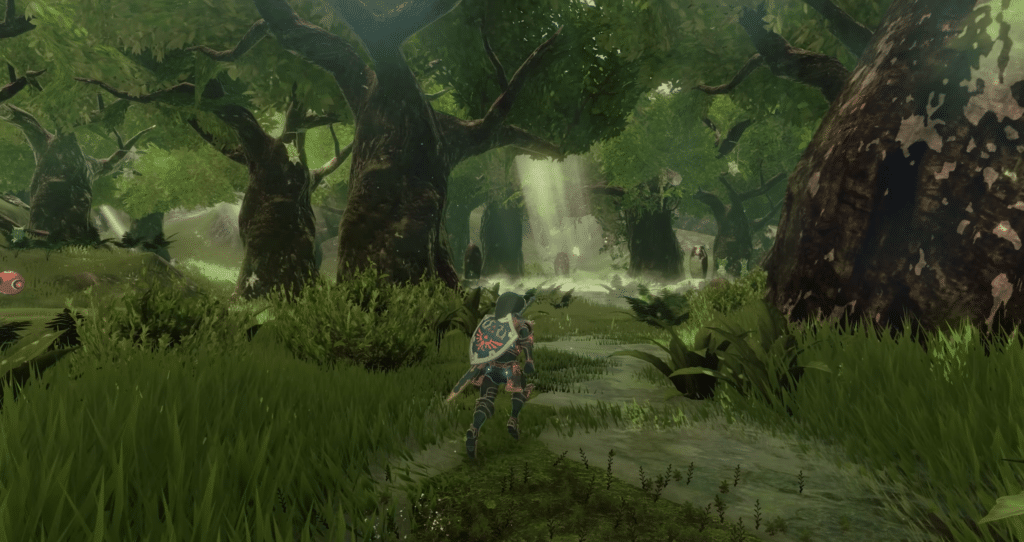
Gameplay Depth: Exploring the Layers of Story, Puzzles, and Mechanics
Narratives and Lore: Epics and Environmental Tales
While both games offer compelling worlds, the manner in which they choose to tell their stories is quite distinct. “Genshin Impact” integrates its lore into virtually every aspect of the game—from main quests to character backstories and even small conversations with NPCs. The rich tapestry of its world is consistently unspooled through scripted events, voice-overs, and dialogue choices. This storytelling style provides a dynamic, evolving narrative that brings life to its characters and locales, making the journey through Teyvat feel like an unfolding epic.
Contrast this with “Breath of the Wild,” where the story is more akin to environmental folklore. Aside from a few key cutscenes and dialogues, the tale of Link’s quest to save Hyrule is often told indirectly. Ancient ruins, forlorn spirits, and even the placement of items tell a story that the player uncovers through pure exploration. In essence, “Breath of the Wild” entrusts the player with piecing together the jigsaw of its lore, offering interpretive freedom that echoes its open-world design philosophy.
The Joy of Problem-Solving: Innovation vs. Strategy
Both games offer a variety of puzzles, but their approaches differ greatly. “Breath of the Wild” incorporates real-world physics into its puzzle design, resulting in challenges that feel organic and intuitive. Whether you’re redirecting water flow to turn a wheel or using magnetism to create a makeshift bridge, the solutions often feel as limitless as your creativity. Each shrine is its own self-contained challenge, often with multiple solutions that reward experimental thinking.
“Genshin Impact,” while less reliant on physics-based puzzles, offers intricate elemental challenges that often require a deep understanding of the game’s mechanics. Elemental combinations aren’t just limited to combat; they play a crucial role in overcoming various obstacles throughout the game. Whether you’re using an ice character to freeze a water surface or combining wind and fire to create a massive updraft, “Genshin Impact” challenges you to think strategically about your team composition and elemental abilities to solve its puzzles.
The Battle Within and Without: An Array of Combat Styles
Combat in “Breath of the Wild” is a free-form experience that rewards improvisation. From using a metallic object to attract a bolt of lightning to enemies or sending a boulder rolling down a hill to wipe out a camp, the game embraces creative problem-solving in battle. While weapon durability is a factor, it also serves as a compelling reason to try different approaches and tools, keeping the combat experience fresh.
In contrast, “Genshin Impact” leans heavily into RPG mechanics, emphasizing character stats, abilities, and elemental synergies. Each character brings unique abilities to the table, adding layers of strategy to encounters. Swapping between characters in real-time to chain elemental combos is crucial for maximizing damage and efficiency. This strategic depth is compounded by the ability to customize your party, letting you tailor your combat style to suit different challenges and personal preferences.
A Tapestry of Gameplay Depth
Both “Genshin Impact” and “Breath of the Wild” provide intricate gameplay loops but do so through different avenues. Whether it’s the dynamic, ever-evolving narrative and elemental mechanics of “Genshin Impact,” or the explorative freedom and improvisational combat of “Breath of the Wild,” each game offers a deeply immersive experience tailored to different types of players. It’s a testament to their design that both can coexist, offering something for everyone while pushing the boundaries of what is possible in an open-world game.
Freedom and Immersion: Crafting Unique Open Worlds with Distinct Personalities
The Dynamic Pulse of Teyvat
In “Genshin Impact,” the world doesn’t just exist; it evolves. Events come and go, giving a sense of real-time progression that keeps players continually engaged. Holidays are celebrated, and cities undergo transformations, creating a dynamic environment that mirrors the excitement of real-world festivities. The bustling markets of Liyue or the musical streets of Mondstadt aren’t just static backdrops; they’re vibrant hubs of activity. Players can participate in daily commissions, challenge elite bosses, or simply chat with NPCs, each of whom has their own stories and daily routines. This dynamism brings an extra layer of immersion, making it feel like you’re a part of a world that exists independently of your adventures.
A Physics-Driven Playground in Hyrule
Where “Genshin Impact” delights in its scripted events and lush NPC interactions, “Breath of the Wild” takes a more systemic approach to immersion. The open world of Hyrule operates on a set of consistent physical and elemental rules. This allows for a staggering amount of player agency and creativity. Want to cross a lake but don’t have a boat? Cut down a tree to create an improvised raft. Need to scale a cliff but it’s raining? Find or create shelter to wait out the storm.
Even the AI of enemy camps demonstrates this systemic depth. Leave a camp half-defeated, and you may return to find they’ve bolstered their defenses. The wildlife, too, behaves with a certain logic—hunt too much in one area, and game will become scarce. In essence, the world of “Breath of the Wild” is a colossal, interactive puzzle unto itself, designed to reward any level of curiosity and exploration with consistent, logical outcomes.
Intricacies of Interactivity
While “Genshin Impact” thrives on active engagement with its world through tasks, quests, and events, “Breath of the Wild” offers a different type of engagement—one based on observation, experimentation, and understanding its intricate systems. For instance, “Genshin Impact” may offer a quest that teaches you about the lore behind a specific ruin, while “Breath of the Wild” would have you stumble upon the ruin organically, leaving it up to you to decipher its mysteries through contextual clues.
Both games have strikingly different interpretations of what an open world should offer. “Genshin Impact” leans into active participation, its world ever-changing but largely directed. “Breath of the Wild,” in contrast, provides a sandbox that reacts logically to your actions, giving you the freedom to approach challenges in almost any way you see fit. These different approaches to freedom and immersion ensure that, despite surface-level similarities, each game offers a uniquely fulfilling experience.

The Verdict: The Best of Both Worlds
Ultimately, choosing between Genshin impact vs. Zelda: Breath of the wild boils down to what you’re looking for in a gaming experience. If you crave a continuously evolving world filled with rich stories, frequent updates, and complex RPG mechanics, then “Genshin Impact” might be the game for you. It’s an online RPG that keeps you invested through consistent content updates and a broad roster of characters.
Conversely, if you value a more focused, immersive experience with a sense of freedom that lets you explore at your own pace, then “Breath of the Wild” might be your go-to. Its design excellence, coupled with that unique Nintendo polish, makes it a stand-alone experience that is hard to compare.
In the end, the best advice might just be to try both games and see which one captivates you the most. Whether you choose to embark on a journey through the magical lands of Teyvat or decide to liberate the kingdom of Hyrule from the clutches of Calamity Ganon, one thing’s for sure: you’re in for an unforgettable adventure.
That wraps up our deep dive into these two iconic open-world games. Each offers its own unique flavor of exploration, combat, and storytelling, making them both excellent choices for any fan of action-adventure titles. If you have the means to experience both, you certainly won’t be disappointed.

